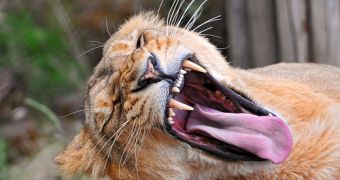A team of researchers from Durham University and the Zoological Society of London, have carried out a study on eleven species of carnivores and concluded that larger species are more vulnerable than small species, to environmental changes.
The reason for this is that besides habitat change and over-hunting, these animals are larger and have to work harder to find their prey.
The team of scientists matched studies of predator populations, to the affluence of their prey and found that a decrease in food supplies affects larger species, like lions, tigers and polar bears, much more than smaller species like badgers or weasels.
The researchers then concluded that larger species might be more vulnerable because they are bigger and they need more energy-producing food to survive.
In this study, the team assessed the least weasel, the Arctic fox, the Canadian lynx, the European badger, the coyote, the wolf, the leopard, the spotted hyena, the lion, the tiger and the polar bear.
“We found that the largest species exhibited a five to six fold greater decrease in relative abundance in response to a decrease in their prey,” said Dr Philip Stephens, from the School of Biological and Biomedical Sciences, Durham University.
“It's hard work being a large predator roaming and hunting across extensive areas to find food.
“The apparent vulnerability of tigers and polar bears to reductions in the availability of prey may be linked to the energetic costs of being a large carnivore.”
This research is very important for the conservation of the largest carnivore species on Earth, since it seems that they are the most affected by environmental threats and variations in prey abundance.
“This study helps us to understand why large carnivores are particularly sensitive to environmental disturbance and why the protection and conservation of their habitat and, in particular, of their prey, are so important to global initiatives to save large carnivores in the wild,” said Dr Chris Carbone, Senior Research Fellow, Institute of Zoology, the Zoological Society of London.
Dr Phil Stephens added that this “study highlights the need for more detailed study to aid carnivore conservation and shows how much more remains to be understood about the relationship between predators and their prey."
The review of this research was published in the Royal Society journal Biology Letters.

 14 DAY TRIAL //
14 DAY TRIAL //